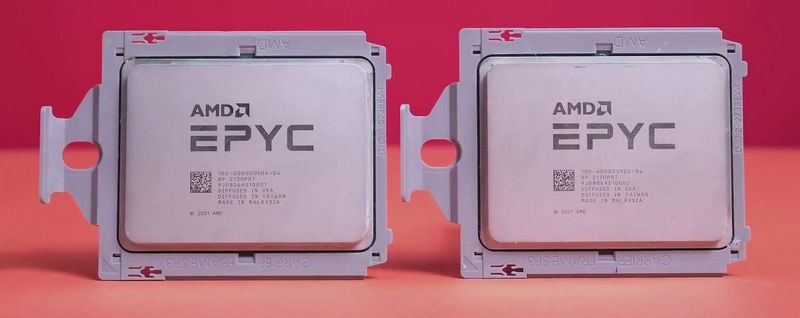AMD’s brand new EPYC 7773X processor is used by kenaide to perform overclocking process, who is a content creator on the Bilibili platform.
A year ago, B-site UP owner @poorkenaidetech teamed up with Uat4 to provide the QS version of AMD’s Skylar 7773X “Milan-X” 3D V-Cache server processor for some benchmark testing. While the results for the two-way configuration were strangely low (presumably due to hardware, software, and BIOS optimization), the ability to hit a full 128 cores at 4.8 GHz under air-cooled conditions gave us a lot to think about.
AMD is currently shipping the EPYC (Xiaolong) 7773X “Milan-X” 3D V-Cache flagship processor to cloud export centers around the world. Meanwhile, some APAC dealers have gotten their hands on an unofficial version of the QS test chip.
Before we get to the benchmarks, let’s briefly go over the technical specs. The QS version of the EPYC 7773X has a base frequency of 2.1 GHz and an acceleration frequency of 3.4 GHz, respectively, 100 MHz less than the official 2.2 and 3.5 GHz.
EPYC 7773X: 4.8 GHz OC achieved, but there is a catch
The user takes an EPYC 7773X processor to overclock this 64-core, 128-thread processor with a dual-socket SuperMicro motherboard.
This monster orchestrated chip from AMD features a 64-core, 128-thread configuration that runs at a base speed of 2.2 GHz and a boost clock speed of 3.5 GHz. This chip is currently not sold to home users and is only distributed to OEM partners. However, this user managed to get his hands on a device.
The EPYC 7773X is identified as CPU 100-0000504-04, which is an OPN core for AMD’s development sample. The special feature of this processor is that it has 3D-V cache technology, which increases the cache memory to 768 MB.
To reach speeds of up to 4.8 GHz, the user uses a special OC tool that removes the performance limits and increases the maximum frequencies and voltages of all cores.
The bad news comes at the end. ExecutableFix, one of the people responsible for the OC tool, explained that the frequency reported by the CPU-Z software is not an actual frequency, but a target. So it is not a real OC, so the clock frequency could be much lower than 4.8 GHz.
